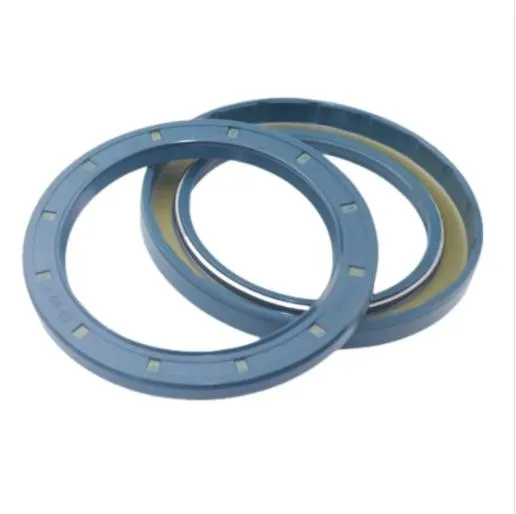ធ្នូ . 03, 2024 16:49 Back to list
hydraulic cylinder dust seal
Understanding Hydraulic Cylinder Dust Seals Importance and Functionality
Hydraulic systems are an essential part of various industrial applications, ranging from manufacturing to construction. At the heart of these systems are hydraulic cylinders that convert hydraulic energy into mechanical energy. However, the operational efficiency and longevity of these cylinders heavily depend on the integrity of their components, particularly the dust seals. In this article, we will explore the significance of hydraulic cylinder dust seals, their functionalities, and how they contribute to the overall performance of hydraulic systems.
What Are Hydraulic Cylinder Dust Seals?
Dust seals, also known as rod seals or wipers, are specialized components found at the extending end of hydraulic cylinders. Their primary purpose is to prevent dirt, dust, and other contaminants from entering the cylinder as the piston rod extends and retracts. By keeping impurities at bay, dust seals play a crucial role in maintaining the hydraulic system's cleanliness, which is vital for its efficient operation.
Importance of Dust Seals in Hydraulic Systems
1. Contamination Prevention The presence of dirt and debris can severely impact the performance of hydraulic cylinders. Contaminants can lead to wear and tear on the cylinder’s internal components, resulting in leaks and reduced efficiency. Dust seals act as the first line of defense, ensuring that the interior of the cylinder remains uncontaminated.
2. Extended Equipment Lifespan By preventing contamination and reducing wear, dust seals significantly extend the operational lifespan of hydraulic cylinders. This longevity translates to lower maintenance costs and reduced equipment downtime, which are crucial for industries relying on hydraulic systems to maintain productivity.
3. Enhanced Performance Hydraulic cylinders with intact dust seals operate more efficiently. When contaminants penetrate the cylinder, they can cause issues like sticky movement or erratic pressure, which hinder the cylinder's performance. With effective dust seals, the risk of such operational irregularities is minimized.
4. Safety Enhancements The presence of contaminants can lead to system failures, which pose safety risks to personnel and equipment. Dust seals help maintain system integrity, reducing the likelihood of accidents caused by equipment malfunction.
Types of Hydraulic Cylinder Dust Seals
Dust seals come in various designs and materials to suit different applications. Some common types include
hydraulic cylinder dust seal

- Polyurethane Seals Known for their excellent abrasion resistance and flexibility, polyurethane seals are widely used in many hydraulic applications.
- Nitrile Rubber Seals These seals offer good resistance to oils and fluids, making them suitable for a variety of hydraulic environments.
- V-Rings and U-Cups These designs provide effective sealing solutions by creating a barrier against contaminants while allowing necessary movement.
Selecting the right type of dust seal depends on several factors, including the operating environment, exposure to chemicals, temperature conditions, and the specific requirements of the hydraulic system.
Maintenance of Hydraulic Cylinder Dust Seals
To ensure the longevity and efficiency of dust seals, regular maintenance is essential. Here are some tips for maintaining hydraulic cylinder dust seals
1. Routine Inspections Regularly check the condition of the dust seals for signs of wear, cracking, or deformation. Early detection of issues can prevent more significant problems down the line.
2. Cleaning Keep the area around the hydraulic cylinder clean and free from debris. This practice helps reduce the risk of contaminants being drawn into the system.
3. Replacement If a dust seal shows signs of significant wear or damage, it should be replaced promptly. Using compromised seals can lead to serious operational issues and increased maintenance costs.
Conclusion
In summary, hydraulic cylinder dust seals are critical components that significantly influence the performance and longevity of hydraulic systems. By preventing contaminants from entering the cylinder, these seals protect internal components, enhancing overall operational efficiency and safety. By understanding their importance and maintaining their integrity, industries can ensure that their hydraulic systems operate smoothly and effectively, ultimately leading to improved productivity and reduced costs.
-
Unlocking the Potential of Hydraulic Systems with Essential Sealing Solutions
NewsAug.06,2025
-
Unleash the Power of Your Hydraulic Systems with Our Premium Seal Kits
NewsAug.06,2025
-
Specialized Hydraulic Seal Kits for Breakers, Pistons, and Presses
NewsAug.06,2025
-
Revitalize Hydraulic Systems with Premium Repair and Seal Kits
NewsAug.06,2025
-
Fortify Your Cylinders with Premium Sealing Solutions
NewsAug.06,2025
-
Elevate Hydraulic System Reliability with Specialized Seal Kits
NewsAug.06,2025
-
TCN Oil Seal Metal Ring Reinforcement for Heavy Machinery
NewsJul.25,2025
Products categories
















